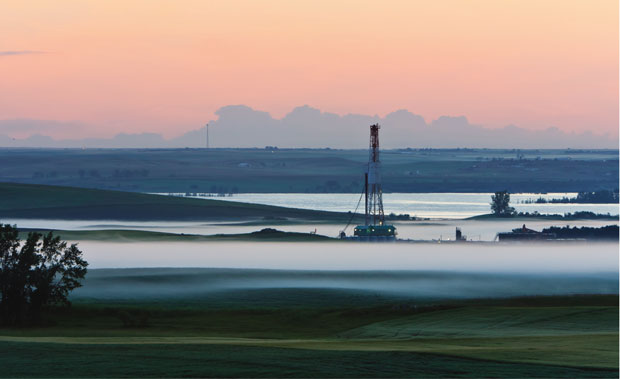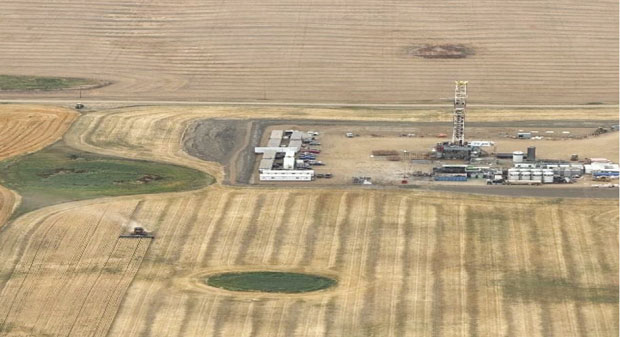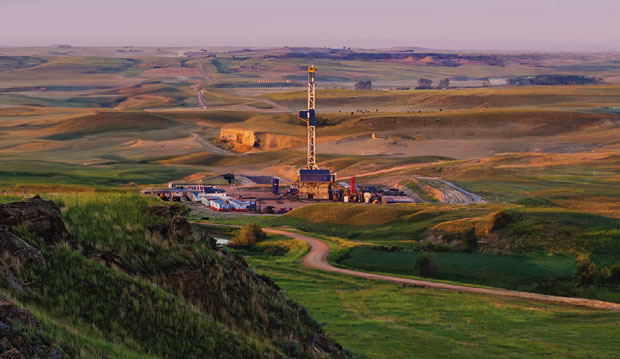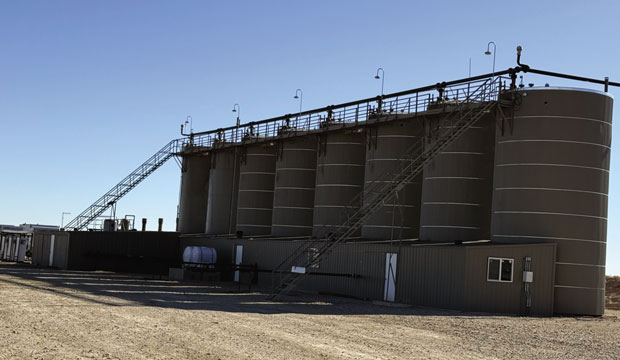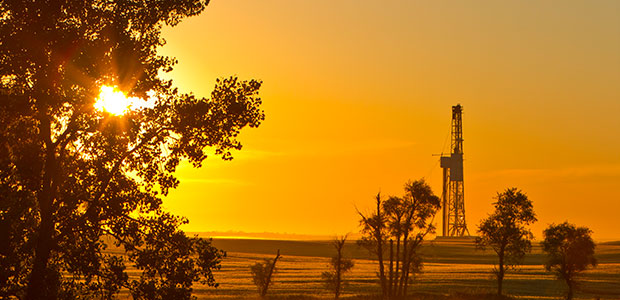
Operators Extend Laterals, Perfect Completion Designs To Capture Upside In Rockies
By Danny Boyd
In sync with national trends, mergers and acquisitions continue to shift the lineup of the companies operating in North Dakota, Montana, Colorado, Wyoming and Utah as successful players build their inventories and prove up development strategies. And of course, innovation continues to power operators of all stripes, from large publicly traded companies to small family-owned independents and from marquee names active in the region for many decades to relative newcomers eager to exploit the Rockies’ stacked pays.
Rocky Mountain pioneers such as Slawson Exploration and Continental Resources, as well as Dakota Energy, Chord Energy, and Scout Energy Partners, are defining a new era of exploration and development targeting huge reserve and production upsides in emerging resource plays in the Powder River and Uinta basins. At the same time, they continue to create new opportunities on time-tested assets in the stalwart Willison Basin.
With 2025 marking 50 years in western North Dakota, Slawson Exploration Company is deploying the latest innovations to extend lateral lengths and reclassify Williston acreage as it adds to its list of top-tier prospects, says President Todd Slawson.
As Slawson Exploration Company celebrates 50 years of operations in North Dakota oil fields, it is extending lateral lengths and leveraging innovation completion designs to high-grade Tier 2 and Tier 3 assets with productivity and recovery rates similar to Tier 1 core properties on its leasehold in Mountrail and McKenzie counties.
Laterals lengths of three miles and more prove that assets farther from the traditional Williston core can yield recoveries similar to Tier 1 properties, he reports. To realize the economic benefits of high-grading Tier 2 and Tier 3 assets, the extra expense of drilling longer laterals is manageable compared to the cost of drilling additional wells to access the same volume of reserves.
“The cost to drill three miles versus two miles is only about another $1.5 million,” Slawson observes. “You are really grabbing a lot of oil for that. It used to be that if you drilled a two-mile well, your second mile did not contribute nearly as much as your first mile. The third mile did not contribute as much as the second. You were leaving a lot of oil behind, but that is not the case any longer. The third mile is just as productive as the first and second miles.”
In addition to longer horizontals, completion innovations that include superior proppant diversion are making a difference and all the enhancements are a testament to service companies, industry engineers and geologists, he insists.
Drilling longer horizontals is not new for Denver-based Slawson Exploration. As far back as 2017, it was boring 3.5-mile laterals to access reserves beneath Lake Sakakawea on the Missouri River. Longer laterals are now a matter of course, says Slawson, who serves as chairman of the North Dakota Petroleum Council.
The company has witnessed drilling and completion advancements since spudding its first Williston horizontal well, the Sidewinder No. 1-7, in Billings County in 1989. It was among the earliest horizontals in the Williston, which Slawson Exploration entered in 1975 when it began vertically drilling the Mission Canyon Limestone and Red River. Sidewinder’s initial production of 1,300 barrels of oil equivalent per day made national news at the time.
Today, the company ranks among the 10 largest Williston Basin producers with 50,000 boe/d of total production. A part of Slawson Companies that includes Kansas real estate interests, the oil and gas company was founded 70 years ago by Todd’s late father, Don, who leveraged success in Kansas to add assets in Montana, North Dakota and Wyoming.
With one rig under contract, Slawson Exploration continues to methodically develop operated acreage on about 110 continuous square miles south of the city of New Town in Mountrail County, as well as on operated acreage in nearby McKenzie County.
While new leasing opportunities in the core of the Bakken/Three Forks play are limited, support from the Trump administration to open more federal lands to oil and gas drilling will benefit Slawson as well as other operators, Slawson concludes.
Breaking Records
The ability to access more federal lands will provide much needed flexibility for operators hamstrung by federal impediments to nominating acreage and bidding on it, says John Argo, vice president of Williston Basin operations for Continental Resources Inc.
On an overall 800,000 net-acre position and producing 190,000 boe/d in the Williston, Continental is drilling progressively longer laterals and tailoring stimulations to expand its defined Tier 1 assets, he reveals. This year, the company is running five rigs and expects to turn 140 wells over to sales. Even at the current robust drilling clip, Continental has a decade or more of Williston inventory already identified, Argo says.
In the Williston Basin, Continental Resources is running five rigs on its 800,000 net-acre lease position and expects to turn 140 wells over to sales this year. Meanwhile, Continental is operating a two-rig program on its 370,000 net-acre position in the Powder River Basin, where it is drilling 25-30 wells.
Repeated success is empowering the drilling team. In 2024, the company repeatedly broke records for the fastest three-mile lateral on six separate occasions, he points out. The fastest was only seven days from spud to rig release. As a reference point, Argo notes that one-mile wells were not drilled that fast when he joined the company in 2014.
Although some operators are now targeting four-mile laterals in the basin, Argo says Continental has yet to drill a lateral of that length and will likely extend its horizontals incrementally as it works to achieve 100% of a 1.5 performance multiplier for three-mile and longer horizontals.
The operations team continually assesses the best approach to stimulation design given a host of variables. Included is the impact of depleted reservoir pressure in a unit when a rig returns to drill remaining wells.
“There are probably hundreds of different ultimate variables that we need to be mindful of and consider, but our teams today are still evolving and pushing that envelope, and we are reaching greater heights because of it,” Argo states.
As the company credited with drilling the first horizontal wells and pumping the first multistage frac treatments in the Bakken formation, Continental is uniquely positioned to see the long view of the play. Argo says the company liked what it sees in front of it: a lot more oil yet to be recovered.
“Even though more than 20,000 horizontal wells have been drilled in the basin, only about 5% of the estimated oil in place has been recovered so far, creating a huge opportunity to apply innovation and technology to capture those reserves,” he remarks.
Powder River Program
In Wyoming’s Powder River Basin, innovation and technology are also central to Continental’s development of a 370,000 net-acre position that extends through the over-pressured southern end of the basin, where the company is in the third year of a two-rig program drilling 25-30 wells, says Ryan Baker, vice president of Powder River operations.
Average lateral lengths were more than 12,000 feet last year, delivering a 15% increase to footing in target over 2023 with the same two-rig program. The company assumed operations on 172,000 net acres acquired from Chesapeake Energy in mid-2022 and continues to be active across the entire operating footprint. This year, laterals will average more than 14,000 feet, Baker predicts.
With production of 45,000 boe/d in the basin today, primary targets over the past 18 months have been the Niobrara and Mowry.
“Every time we drill for the Niobrara or Mowry, we tend to get a look at opportunities that exist uphole,” Baker says. “Continental is a strong explorationist, and we are always evaluating the potential of new horizons. It is exciting because most of the basins where Continental operates have that stacked pay potential.”
Whether in the Powder River or the Williston, operations are supported by regional employees with a strong desire to build on positions and progress, Argo adds.
“There is a big sense of pride in our company as an organic exploration-driven company,” he says. “We are not opposed to acquiring the right assets when it is appropriate at the right value accretion, but exploration has always been at the heart of what Continental does.”
Plenty Of Running Room
While consolidation in the Williston continues, that activity has not yet been accompanied by many non-core divestments, which typically benefit small and mid-sized operators, according to Preston Page, president of Dakota Energy LLC. The company acquires and packages leasehold, supported by geological and engineering research, and has partnered with a variety of operators, including those who want to drill longer laterals and newcomers looking to gain a foothold in the basin.
The average rig is now drilling 250,000 lateral feet per year in the Williston Basin, with operators on track to drill up to 10 million lateral feet total this year at current rig counts. Across the 7-million-acre basin, about 1.5 million acres remain undrilled, creating plenty of running room for companies such as Dakota Energy. The company partners with a variety of operators, including newcomers to the prolific basin.
Divesting assets can be less desirable for pure-play companies and others whose positions are buttressed by innovations that allow for continual economic upgrades of inventories, he explains. “It is not the result of a single technological breakthrough, but a combination of a numerous innovations bringing efficiencies, including cost control, longer laterals, better completions and better production methods,” Page assesses. “All of that has come together in the Williston to make millions more acres more economic.”
Throughout the basin, the average rig is drilling approximately 250,000 lateral feet per year, and that efficiency continues to climb, according to Page. With a rig count in the mid-30s, a total of up to 10-million lateral feet could be drilled this year in the Bakken. “With five wells per spacing unit, that rig pace will cover around 250,000 acres per year–enough runway to get well into the next decade,” he notes.
Page adds that the Bakken is around 7-million acres and that about 1.5 million acres remain undrilled. There is “plenty of running room and plenty of oil left in place,” and that includes reserves left behind by vintage completion designs, he relates.
“The basin has historically been under-stimulated,” Page states. “About one-third of the wells were stimulated with less than 400 pounds of proppant per foot. Recent advancements in technology have expanded the 20-plus net present value perimeter of the Bakken by several million acres at a $60/barrel oil price. We have a lot of reasons to be optimistic.”
More federal leases will help, he says, recalling one Dakota Energy property in which partial Bureau of Land Management ownership on part of a tract held back development on the entire 1,920-acre unit. It took two years to get federal interests nominated for auction and for development to proceed.
“Across the board, we think the Williston is one of the best investment environments in the country,” says Page, a North Dakota Petroleum Council board member. “About 98% of our balance sheet is here for a reason.”
Four-Mile Laterals
After amassing 1.3 million acres and growing its companywide output to 152,000 barrels of oil a day, Chord Energy Corporation continues to work the Williston. Earlier in the year, the Houston-headquartered company successfully drilled and completed its first four-mile lateral, reaching a total depth of more than 30,400 feet, says Chief Operating Officer Darrin Henke.
The time from spud to rig release was 14.5 days, and despite the challenge from anticipated friction losses pumping frac stages at the toe, the completion was successful, Henke reports. Additional four-mile wells are being formed by combining two-mile drilling space units.
“However, similar to Chord Energy’s evolution of a three-mile program, as we make progress on execution and drive the risk-adjusted returns higher, we ultimately could look to convert some of our existing three-mile inventory into four-mile wells,” he comments.
Chord Energy Corporation has successfully drilled and completed its first four-mile lateral on the company’s 1.3 million-acre Williston leasehold. The well drilled to a total depth of more than 30,400 feet in 14.5 days from spud to rig release. Chord Energy expects to turn 130-150 total wells to sales this year through its five-rig drilling campaign.
In its 2025 drilling campaign, three-mile laterals will comprise about 40% of 130-150 total wells projected to be turned to sales. In 2026 and 2027, three-mile laterals are expected to increase to 50% of wells as Chord extends horizontals and realizes efficiencies from a now five-rig program supported by one full-time frac crew and one spot crew, Henke says.
Cycle times on three-mile wells were reduced by a day and a half last year. The company experienced dramatic efficiency improvements by adopting simulfracs across the fleet, Henke adds. Simulfracs performed by the full-time frac crew are driving down non-productive time and have increased lateral feet completed each day by 40% compared to the pace of zipper fracs.
For the company, three-mile laterals deliver 50% more estimated ultimate recovery than two-mile wells for only 20% more capital, Henke reveals. Total finding and development costs for the western three-mile wells are better than two- mile wells in the core as lower drilling and completion costs per foot more than offset lower EUR per foot.
“Said another way, longer laterals outside the core actually have similar or better returns than two-mile wells inside the core, as core wells generally have higher costs given the depth, pressure, and other complexities that need to be managed,” Henke summarizes.
Chord Energy is also realizing additional savings from more restricted chokes on production to prevent sand flow back and extend the life of electrical submersible pumps, he adds.
Uinta Basin Horizontals
Scout Energy Partners has a mostly operated 4-million-acre footprint across multiple U.S. basins that produces 110,000 boe/d. Among its assets are vertical wells in Southwest North Dakota that produce from the Red River, Madison and Lodgepole formations, says Executive Vice President Juan Nevarez.
Backed by steady performance in the storied Rangely Field in Colorado, and on the Williston’s periphery, the Dallas-based company has been busy extending its Rockies reach into Utah’s Uinta Basin, where initial well productivities have surpassed 1,100 barrels of oil a day, he says.
Comparable results are enticing others to consider the basin as an affordable alternative to expanding inventory, Nevarez says. Scout Energy Partners entered the Uinta in September 2022 when it acquired the 110,000-acre Greater Monument Butte System in Duchesne and Uintah counties from Ovintiv.
Scout Energy Partners, alongside Wasatch Energy Management, has drilled 21 horizontal wells with an average two-mile lateral length in the Uteland Butte Formation in the Uinta Basin in Utah. The target formation consists of dolomite, limestone, and other organic-rich mudstone and siltsone intervals, and initial well productivities have surpassed 1,100 barrels of oil a day.
“At the time, it was kind of a sleepy basin with a few private companies getting aggressive with horizontal development, and that just attracted others looking for inventory because there was limited opportunity elsewhere and the rock quality is good with estimated ultimate recoveries that compete with the Midland and Delaware basins in the Permian,” Nevarez says.
The system initially consisted of a conventional waterflood, but neighboring operators to the north were busy proving horizontal potential, he recalls. Working with Wasatch Energy Management, Scout soon set out to prove up its acreage.
So far, the partnership has drilled 21 horizontal wells with mostly two-mile laterals in the Uteland Butte Formation, which consists of dolomite and other minerals at a depth of about 5,500 feet. The bench is considered the source rock to sandstones up hole, Nevarez details.
So far, the company has identified 100 prospective locations. Counting possibilities up hole in the Wasatch and Castle Peak benches, the number is closer to 200, he says.
Drilling will resume this summer with plans to TD 10-15 wells by the end of the year. Next year, Scout will kick off a 25-30 well drilling program.
The prospects for the company’s development program are reinforced by an industry-friendly regulatory environment in Utah and additional pipeline takeaway capacity, Nevarez adds.
While some crude supplies a Salt Lake City refinery, most of the waxy oil is trucked to a rail facility and shipped to Gulf Coast refineries. “Volumes by rail have increased over the past two years and we expect that it will continue to increase,” Nevarez concludes.
For other great articles about exploration, drilling, completions and production, subscribe to The American Oil & Gas Reporter and bookmark www.aogr.com.














